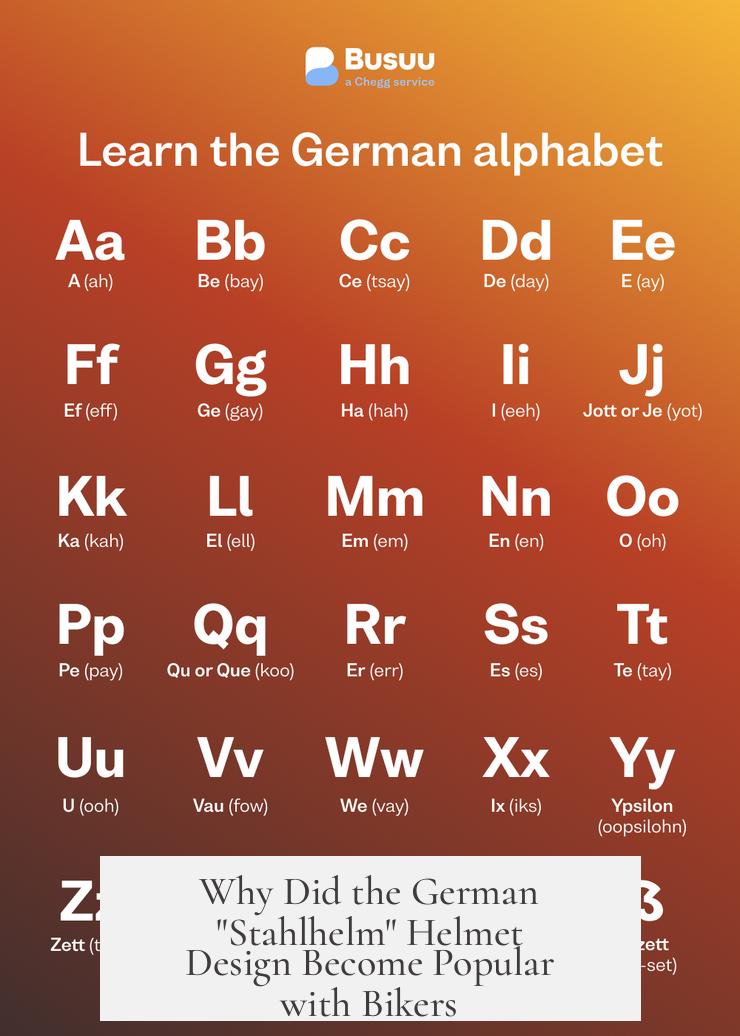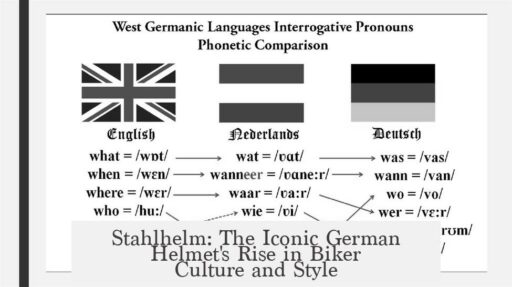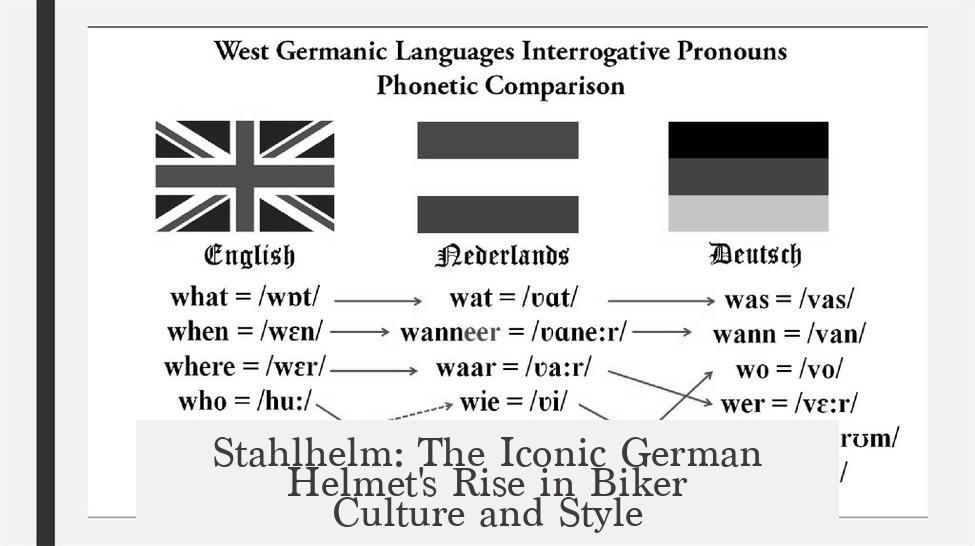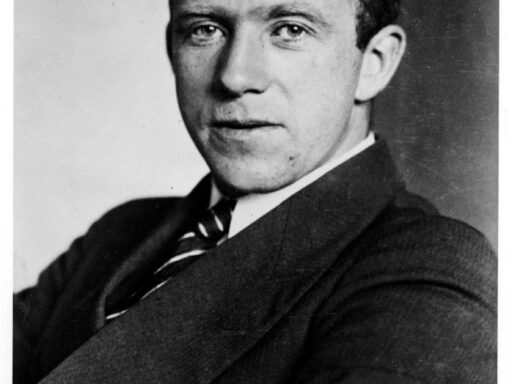The German “stahlhelm” helmet design gains popularity with bikers primarily due to post-World War II surplus availability, affordability, and its association with rebellious youth culture. After 1945, large quantities of German military equipment, including the stahlhelm, entered the surplus market. This made these helmets accessible to young motorcyclists, especially teenagers, at a low cost.
The helmet’s distinctive shape evokes a strong, edgy image. Bikers adopted it not only for protection but also for its symbolism. It represented defiance and rebellion, aligning well with the emerging teenage culture of the 1950s.
In postwar Britain and other countries, surplus army motorbikes flooded the market. These provided cheap transport for teenagers seeking independence. Alongside those bikes, stahlhelm helmets supplied affordable head protection.
The combination of economic factors and cultural symbolism supports the stahlhelm’s rise in biker culture. Its availability made it practical. Its visual appeal made it iconic.
- Post-WWII surplus led to wide stahlhelm availability.
- Affordable helmets met young bikers’ need for protection.
- Helmet design symbolized teenage rebellion and edginess.
- Surplus motorbikes and helmets grew biker culture in the 1950s.
These reasons explain why the German stahlhelm remains a recognizable and influential design in the history of biker helmets.
Why Did the German “Stahlhelm” Helmet Design Become Popular with Bikers?

The German “Stahlhelm” helmet design gained popularity among bikers mainly due to its ready availability after World War II, affordability for young riders, and the rebellious image it symbolized. But there’s so much more to this story than just surplus military stock and teenage swagger.
Let’s dive into the unique blend of history, culture, and style that turned a wartime helmet into a biker icon.
History Meets Highways: Surplus Helmets Hit the Streets

Picture this: It’s the late 1940s and early 1950s. Europe is rebuilding. Armies have just laid down their weapons. Amidst the rubble and recovery, gigantic piles of military equipment become available—cheaply and in large quantities.
After Germany’s surrender in 1945, a flood of German materiel, including the iconic stahlhelm helmets, poured into the post-war surplus market. The Allies had their pick of equipment, but much was left behind and soon filtered down to civilians.
For teenagers eager to hit the road, these helmets were a godsend. Not only did they offer genuine head protection—a crucial factor for the new wave of motorbike enthusiasts—but they also came with a price tag far below that of newly manufactured helmets.
In other words, they were affordable and accessible. If you were a teenager with a sweet, economy-class motorbike, you could afford to add some headgear that didn’t break the bank.
The Rise of Teenage Rebels and Motorcycle Culture

Here’s an interesting fact: The 1950s marked the birth of a teenage culture defined by independence and a pinch of defiance. These youngsters wanted to carve out their own identities. Motorbikes were an ideal tool—cheaper than cars, flexible, and downright liberating.
And where there are motorbikes, helmets follow. But a plain, boring helmet wouldn’t do. Enter the stahlhelm with its distinctive shape: deep flares over the ears, a broad protective brim, and an aura of toughness. It looked sharp, edgy, and yes, rebellious.
Why did this helmet scream rebellion? Because it was associated with German soldiers—the ultimate tough guys of World War II in the eyes of post-war youth. Wearing a stahlhelm wasn’t just about safety; it was a statement. It said you were part of a counterculture that wasn’t afraid to challenge norms.
The helmet became a symbol of teenage rebellion, embodying a raw, gritty aesthetic that mainstream society often frowned upon. Talk about wearing your attitude on your head!
Parallel Developments: Bikes and Bikes… and Helmets

The post-war period saw another parallel story: the motorbike itself was becoming a cornerstone of youth mobility. With the armory of surplus motorcycles available, teens had cheap and independent transport options.
Motorbikes like the BSA and Norton—sometimes cobbled together from military leftovers—were easily attainable. The only catch? You needed protection that matched the rough and ready lifestyle.
Here’s the kicker: *the availability of surplus helmets matched perfectly with the motorbike culture explosion.* Suddenly, the stahlhelm wasn’t just a relic; it was integrated into the daily lives of an entire generation.
This synergy between affordable helmets and affordable bikes didn’t just happen by accident. It reflected a broader social and economic reality where war machines were repurposed for peacetime freedom.
Benefits That Go Beyond Style

- Robust Protection: The stahlhelm was designed for combat, meaning it was sturdy—probably more protective than some modern helmets of that era.
- Distinctive Design: Its shape flared over the ears and around the neck, offering excellent coverage without sacrificing visibility.
- Iconic Edge: Wearing one offered bikers an immediate, unmistakable identity. It wasn’t just gear; it was a look.
Of course, modern helmets now far surpass the stahlhelm in terms of safety and comfort. But for its time, this design hit the sweet spot between function, fashion, and cultural messaging.
Personal Experience: Why Some Still Rock the Stahlhelm Look
If you ever chat with veteran bikers, you’ll hear stories about the allure of the stahlhelm. For many, it’s nostalgia and respect for a heritage that connects biking to something bigger. The helmet says, “I’m tough, I’m independent, and I know my history.”
One biker told me, “Wearing a stahlhelm-shaped helmet feels like owning a piece of the past, but riding into the future.”
Others appreciate the helmet’s bold lines and aggressive stance as a fashion statement. It stands out in a sea of round, aerodynamic helmets. In a culture where individuality counts, that’s a big deal.
So, Why Exactly Did the Stahlhelm Design Catch On?
It boils down to a perfect storm of factors:
- Historical Surplus: Readily available helmets at low cost.
- Teenage Rebellion: The helmet’s edgy and tough image perfectly encapsulated youth defiance.
- Biker Culture Growth: Cheap motorbikes paired with affordable, protective gear created a natural demand.
In a way, the stahlhelm helmet became a symbol of freedom—liberating youth from restrictions by offering protection and attitude. It was a badge of honor and a safety tool wrapped into one.
Final Thoughts: Beyond The Helmet
The popularity of the German stahlhelm among bikers is not just a footnote in history. It’s a fascinating glimpse into how culture, economics, and symbolism interact. A military relic turned icon of rebellion and mobility—who would have thought?
So next time you spot a biker wearing a Stahlhelm-style helmet, remember: it’s not just about looking cool. It’s about connecting to a past shaped by war, survival, and youthful spirit. And that, my friends, is *one* heck of a story built into a helmet.




